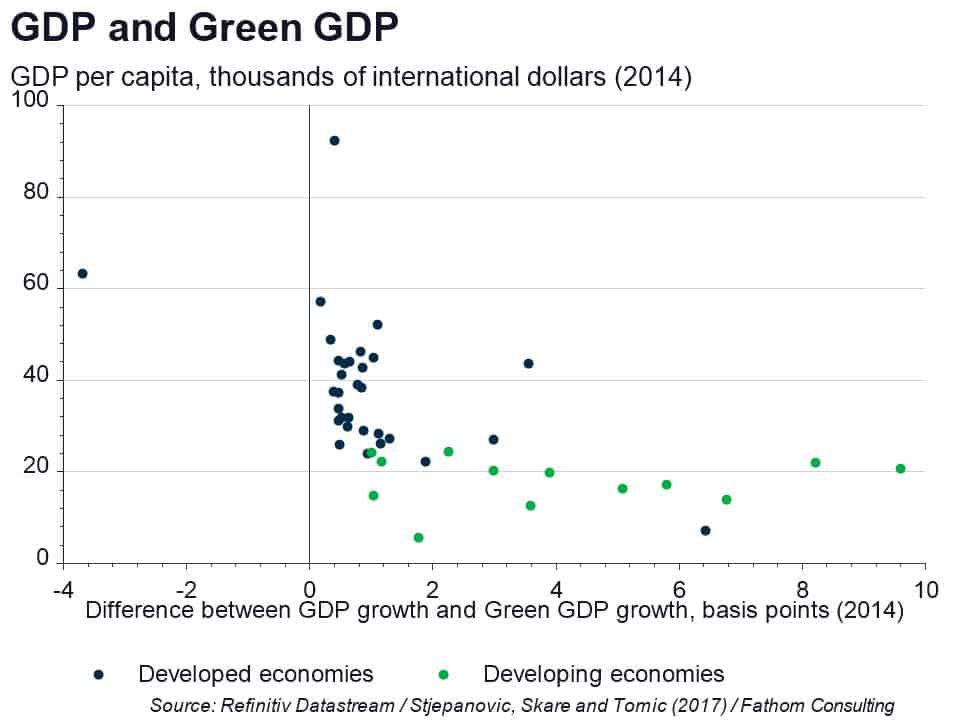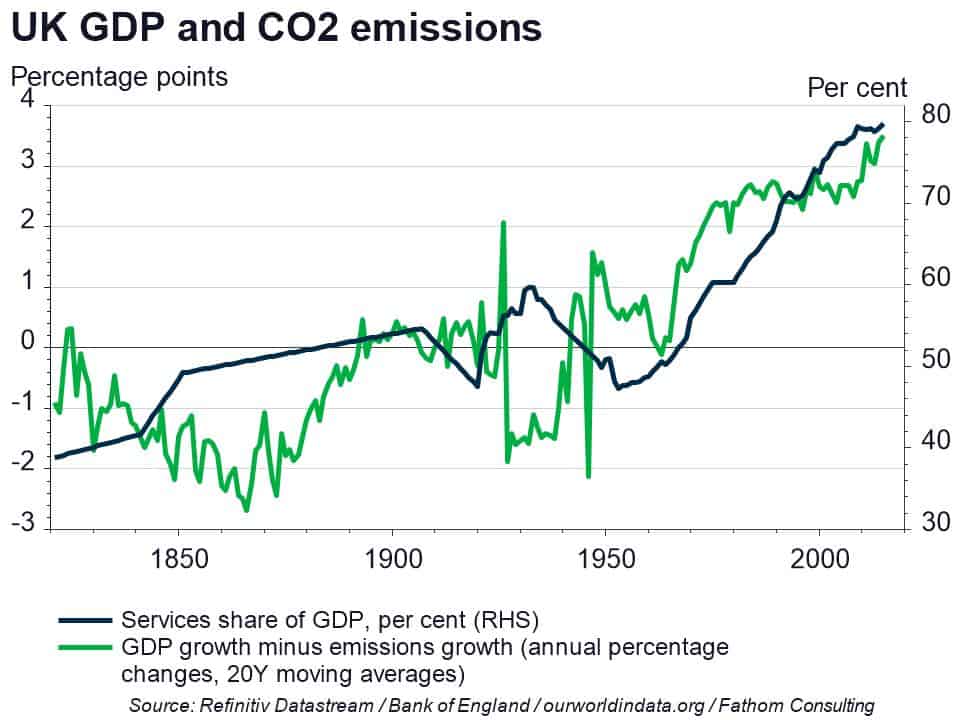A sideways look at economics
The debate around climate change, and what actions governments, the private sector and households ought to take is being thrust ever more into the public eye. Earlier this year ‘Extinction Rebellion’ protests demanding ‘emergency’ action disrupted central London — although arguably not as much as this week’s ‘heatwave’, which once again exposed the UK’s infamous struggles with inclement weather. But with temperature records set in many European cities, it highlighted a longer-term trend towards a warming planet. The climate debate continues to rage on. For its part, the UK has one of the most ambitious climate targets in the world, aiming to reduce net carbon emissions to zero by 2050. Evidence suggests an advanced economy such as the UK’s should find it easier to achieve that goal than a less developed one would.
The idea that environmental damage may be harmful to future productive potential is embodied in the concept of ‘Green GDP’,[1] which attempts to take into consideration social and environmental costs by adjusting GDP downwards by an estimate of resource and environmental depletion. Any such exercise is bound to be subject to significant uncertainties. In a world of cross-border supply chains and high levels of trade, breaking down the environmental costs of growth in one country will necessarily be no easy task. Nevertheless, the broad conclusions can be informative. As the chart below shows, the environmental cost of additional economic activity falls as GDP per capita rises. That is, as countries get richer, there’s a smaller difference between official GDP growth and Green GDP growth.

There are a couple of reasons why advanced economies may be able to achieve ‘greener growth’. First, with higher standards of living, governments are generally more willing to sacrifice some GDP in the name of environmentally sustainable policies. The priorities for politicians in emerging economies may be different. Another factor that probably plays a role in this advanced and emerging country dichotomy is the shift of developed economies towards services-based industries (such as economic consultancies) which, generally speaking, are less polluting than manufacturing (even if the throngs of tertiary-sector employees stuck on a filthy tube carriage during rush hour feel inclined to disagree). The chart below shows a clear link between the rise of the services sector in the UK and ‘greener’ UK growth.

While it’s no doubt good news that rich countries are now able to generate ‘greener’ growth, the idea of breaking down the environmental costs at the level of the nation state doesn’t seem appropriate. For one, as the UK has become more services-intensive, its imports of manufactured goods from emerging markets with less-green growth have increased. If greener growth here can only be achieved at the expense of less-green growth elsewhere, it’s not clear that any environmental benefit in a global sense has been accrued. In addition, all countries share the same atmosphere and planet; the benefits of more environmentally efficient growth in the UK will not come to an immediate halt at its border. At the same time, the UK can itself never be entirely protected from environmentally damaging growth elsewhere. That’s what makes problems such as climate change so difficult to solve — it’s a real tragedy of the commons. True, many emerging economies will eventually transition to greener growth based around services. However, in the long run, it may not just be us, but also the planet that is dead.
[1] Stjepanovic, Skare and Tomic, ‘A new approach to measuring green GDP: a cross-country analysis’ (2017).